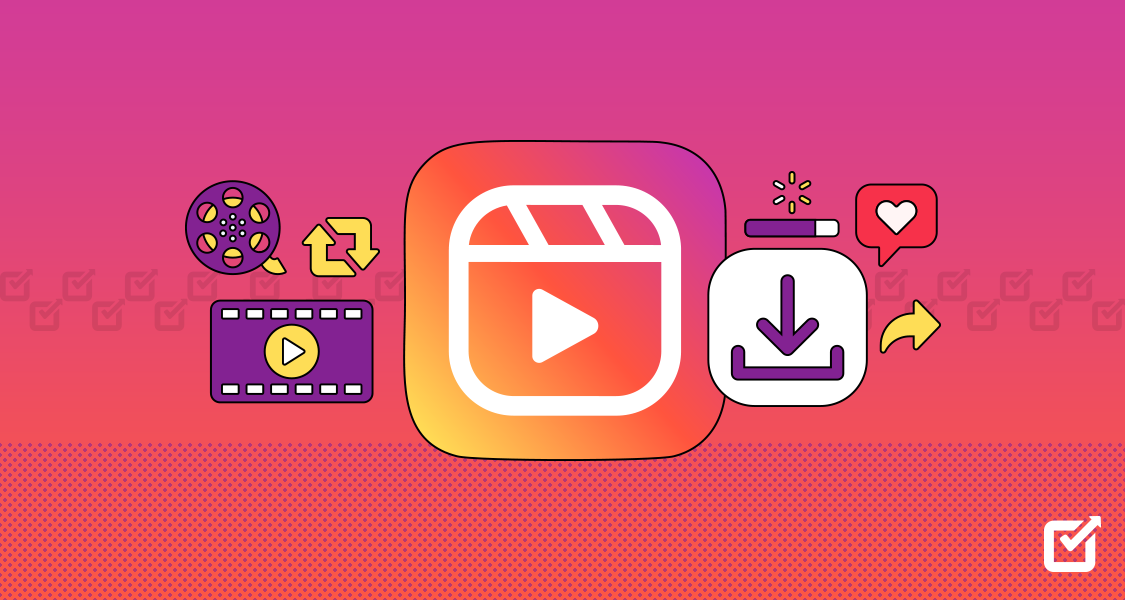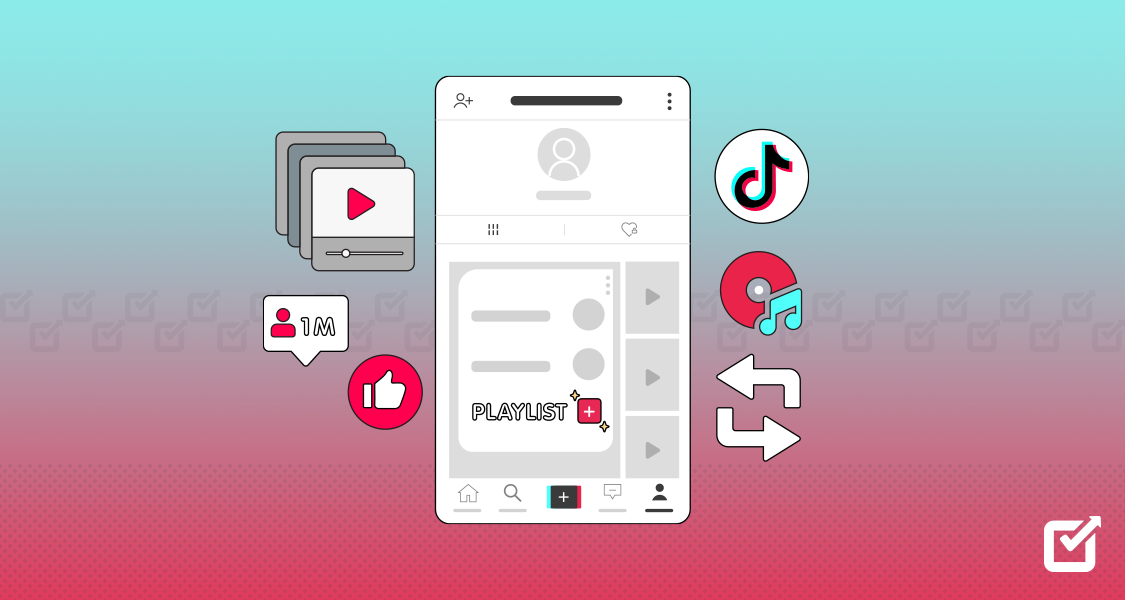Are you feeling like your social media presence is a black hole, swallowing content but producing no leads?
You’re not alone. In fact, 44% of marketers struggle to quantify the Return On Investment (ROI) of their social media efforts.
The solution? A clear strategy. This is where the social media funnel comes in. This framework guides potential customers from brand awareness all the way to loyal fandom.
Gone are the days of relying on chance encounters with brilliant content to drive sales. It’s time to get tactical and use the power of the social media funnel.
Studies show that social media strategies are 3.5 times more likely to succeed than those lacking a defined approach.
In this blog, we’ll explain what a social media funnel is, its stages, and how you can create one for your brands.
But before we start, here’s a little tip: add a social media management tool to your brand toolkit to make marketing simple and easy!
Stop Leaks in Your Social Media Funnel!
Social Champ helps you identify and plug the holes in your social media strategy. Schedule posts, analyze results, and nurture leads with targeted messaging – all from one place.
Short Summary
- A social media funnel helps you turn potential customers into loyal fans.
- It has five stages: awareness, interest, consideration, conversion, and advocacy.
- You can create a social media funnel by following five steps: identifying your target audience, creating engaging content, using social media tools, engaging with your audience, and analyzing and optimizing your efforts.
What Is a Social Media Funnel?
To properly explain what a social media funnel is, we’ll have to paint you a picture. Imagine a funnel. At the top, it’s wide open, allowing a large amount of water to flow in.
This represents potential customers on social media who are just discovering your brand.
As the water travels down the funnel, it narrows, signifying how only a certain portion of those initially aware will convert into paying customers or take the desired action.
At the top of the funnel, many potential customers see your social media content – maybe through posts or ads. These customers might be completely new to your brand. This is the awareness stage.
Next, some of these viewers engage. They like your posts, comment, or click on links to learn more. They’re getting interested! This is the consideration stage.
A smaller group of interested customers will ultimately convert. They might buy something or sign up for your email list. This is the conversion stage.
But the best part? Happy customers who tell their friends about you, or keep coming back for more. These are your loyal fans, who reached the advocacy stage.
The social media funnel shows how customers move through these stages.
It helps you leverage social media to turn that wide funnel of possibilities into real customers who love your business.
What makes social media funnels unique? Unlike traditional marketing, funnels take advantage of social features: likes, shares, comments, and direct messages.
These interactions allow you to build relationships and guide potential customers toward purchasing.
Featured Article: How to Create an Influencer Media Kit in 5 Steps in 2025
What Are the Stages of a Social Media Sales Funnel?
A social media sales funnel maps potential customers’ journey, from the moment they discover your brand on social media to becoming loyal, repeat buyers.
By understanding these stages, marketers can create targeted campaigns to guide these potential customers toward a purchase effectively.
Here’s an in-depth look at each stage of the social media sales funnel:
Awareness
In the awareness stage, potential customers first come into contact with your brand. The primary objective is to reach a broad audience and make them aware of your products or services.
Key activities at this stage include:
- Social Media Posts: Share engaging content highlighting your brand’s value proposition.
- Paid Advertising: Use targeted ads to reach a larger audience with specific interests related to your business.
- Influencer Collaborations: Partner with influencers to increase your brand’s visibility.
The goal is to create a strong first impression and pique the interest of potential customers.
Interest
Once you’ve captured the audience’s attention, the next step is to create their interest in your offerings. This involves providing content that resonates with their needs and encourages further engagement.
Strategies at this stage include:
- Educational Content: Share blog posts, videos, and infographics that address pain points and provide solutions.
- Interactive Content: Use polls, quizzes, and live Q&A sessions to engage your audience actively.
- Social Proof: Highlight customer testimonials and success stories to build credibility.
Your brand will remain relevant and engaging if you spark curiosity and provide valuable information.
Consideration
At the consideration stage, potential customers evaluate your products or services as possible solutions to their problems. They may compare your offerings with those of competitors.
Important tactics at this stage include:
- Detailed Product Information: Provide comprehensive product descriptions, specifications, and benefits.
- Case Studies and Testimonials: Share real-world examples and customer feedback to demonstrate your product’s effectiveness.
- Product Demonstrations: Offer webinars, live demos, or tutorial videos to showcase how your product works.
The aim is to persuade potential customers that your brand is the best choice by providing compelling evidence of your product’s value.
Conversion
Conversion is the stage where interested prospects turn into paying customers. The focus is to make the purchasing process as seamless and straightforward as possible.
Effective strategies include:
- Clear Calls to Action (CTAs): Use strong CTAs to guide users toward purchasing.
- Limited-Time Offers: Create a sense of urgency with special discounts or limited-time promotions.
- Smooth Checkout Process: Ensure your checkout process is user-friendly and secure to reduce cart abandonment.
Making it easy for customers to complete a purchase is crucial to maximizing conversions.
Retention
Once a lead becomes the customer, the next goal is to retain them. Customer retention involves keeping customers satisfied and engaged so they continue to buy from you.
Key practices include:
- Personalized Follow-Up: Send thank-you emails, ask for feedback, and offer personalized recommendations.
- Loyalty Programs: Implement loyalty programs that reward repeat purchases and encourage ongoing engagement.
- Exclusive Content and Offers: Offer existing customers access to exclusive content, early product releases, or special discounts.
Retention strategies help build long-term relationships and increase customer lifetime value.
Advocacy
The final stage of the social media sales funnel is advocacy. Satisfied customers with positive experiences with your brand will likely become advocates.
They can help promote your brand through word-of-mouth, referrals, and sharing content on social media. Key actions include:
- Encouraging Reviews and Referrals: Ask happy customers to leave reviews or refer friends and family.
- User-Generated Content: Encourage customers to share their experiences and tag your brand on social media.
- Engagement and Recognition: Recognize and appreciate your advocates through shoutouts, features, or rewards.
Advocacy boosts your brand’s reputation and attracts new customers through trusted recommendations.
Understanding the stages of the social media sales funnel and implementing targeted strategies for each can significantly enhance your ability to convert prospects into loyal customers.
By effectively managing each stage—awareness, interest, consideration, conversion, retention, and advocacy—you can create a seamless journey for your customers.
This drives both engagement and sales.
Featured Article: The Best Practices of Social Media Lead Generation in 2025
How to Create a Social Media Funnel in 5 Simple Steps
Creating a social media marketing funnel can transform your marketing efforts by guiding potential customers through a structured journey from awareness to advocacy.
Here’s a straightforward guide to building an effective social media funnel in five simple steps:
Identify Your Target Audience
Before establishing your funnel, you must understand your ideal customers. This step involves:
- Creating Buyer Personas: Develop detailed profiles of your target market segments based on demographics, interests, and behaviors.
- Conducting Market Research: Use surveys, interviews, and social media analytics to gather insights about your audience’s needs and preferences.
- Analyzing Competitors: Study your competitors to see how they engage with similar audiences.
Knowing your target audience helps you tailor your content and strategies to meet their specific needs.
Create Engaging Content for Each Stage
Content is the driving force behind your funnel social media. You need to develop content that addresses each stage of the customer journey:
- Awareness Stage: Share broad, engaging content, such as blog posts, infographics, and videos, that introduce your brand.
- Interest Stage: Post educational content, such as how-to guides, webinars, and industry news, that keeps your audience interested.
- Consideration Stage: Provide detailed product information, case studies, and comparison charts to help prospects evaluate your offerings.
- Conversion Stage: Use strong CTAs, special offers, and testimonials to encourage purchases.
- Retention and Advocacy Stages: Share follow-up content, exclusive deals, and user-generated content to retain customers and turn them into advocates.
Tailoring content to each stage ensures you provide value and keep prospects moving through the funnel.
Utilize Effective Social Media Tools
You can also leverage various tools to enhance your social media management and streamline your funnel creation:
- Scheduling Tools: Use platforms like Social Champ to schedule posts and maintain a consistent presence.

Social Champ dashboard - Analytics Tools: Monitor performance with tools like Google Analytics, Facebook Insights, and Social Champ to understand what’s working.

Social Champ dashboard - Engagement Tools: Utilize tools like Social Champ to manage interactions and nurture relationships with your audience.

Social Champ dashboard
These tools help you execute your strategy efficiently and track progress accurately.
- Scheduling Tools: Use platforms like Social Champ to schedule posts and maintain a consistent presence.
Take Control of Your Social Media With Social Champ!
Manage everything in one place. Schedule posts, track performance, and engage with followers – all from a single dashboard.
Engage With Your Audience
Active engagement is crucial to building trust and fostering loyalty. Here’s how to do it:
- Respond Promptly: Answer comments, messages, and mentions quickly to show you value your audience’s input.
- Encourage Interaction: Use polls, Q&A sessions, and interactive content to encourage participation.
- Personalize Communication: Address your audience by name and tailor responses to individual queries.
Engaging with your audience humanizes your brand and strengthens relationships.
Analyze and Optimize
Regularly reviewing and optimizing your funnel is essential for sustained success. Focus on:
- Tracking Key Metrics: Monitor metrics like engagement rates, click-through rates, conversion rates, and customer retention.
- Gathering Feedback: Collect feedback through surveys and direct interactions to identify areas for improvement.
- Refining Strategies: Use insights from your data analysis and feedback to continuously refine your content and strategies.
Constant optimization ensures your funnel adapts to changing market dynamics and audience preferences.
By following these five simple steps—identifying your target audience, creating engaging content, utilizing social media tools, engaging with your audience, and analyzing and optimizing your efforts.
You can build an effective social media funnel that drives meaningful results.
Featured Article: The Science Behind Good Social Media Hooks 100+ Examples
Conclusion
Understanding and implementing a social media funnel in 2024 can greatly improve your brand’s online presence and boost conversion rates.
You can transform casual followers into loyal customers by leading your audience through stages like awareness, interest, consideration, conversion, loyalty, and advocacy.
Start by defining your goals, identifying your target audience, creating engaging content, and using analytics to measure success.
Regular optimization will make your social media funnel a powerful tool for driving business growth.













